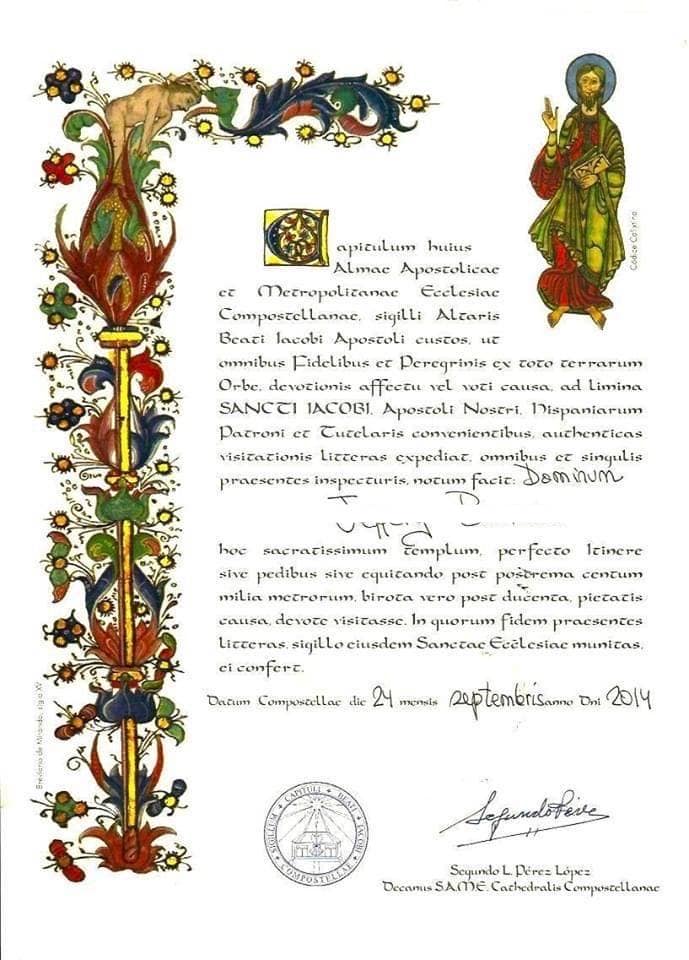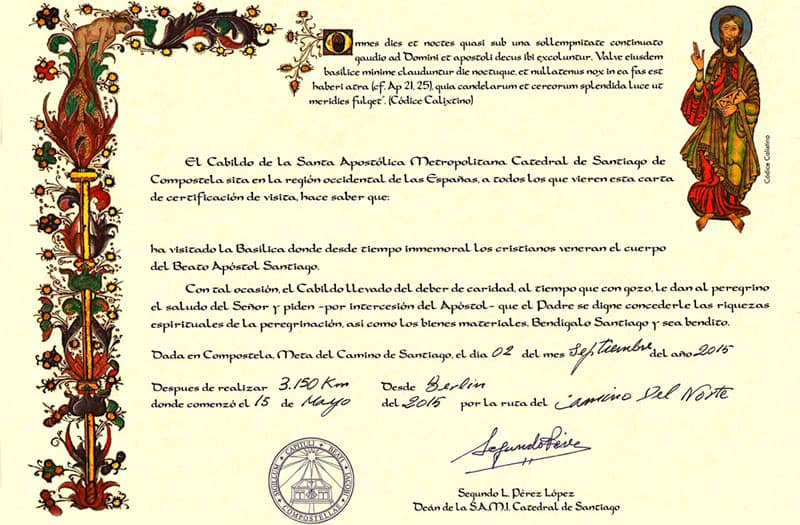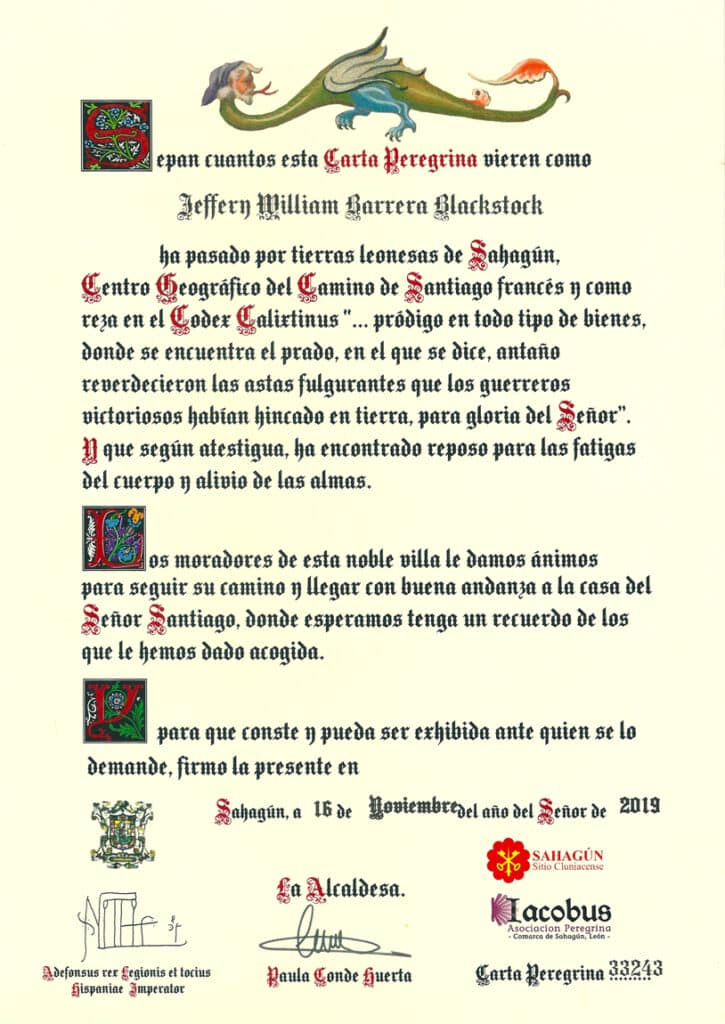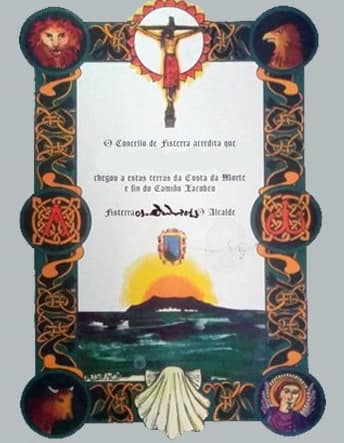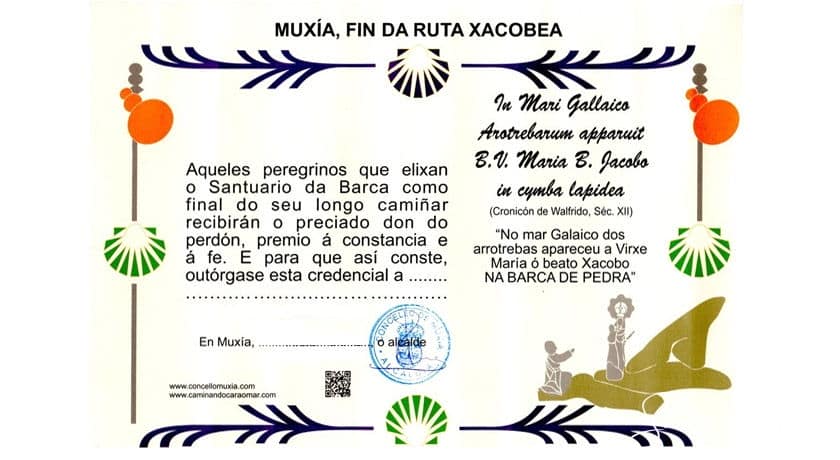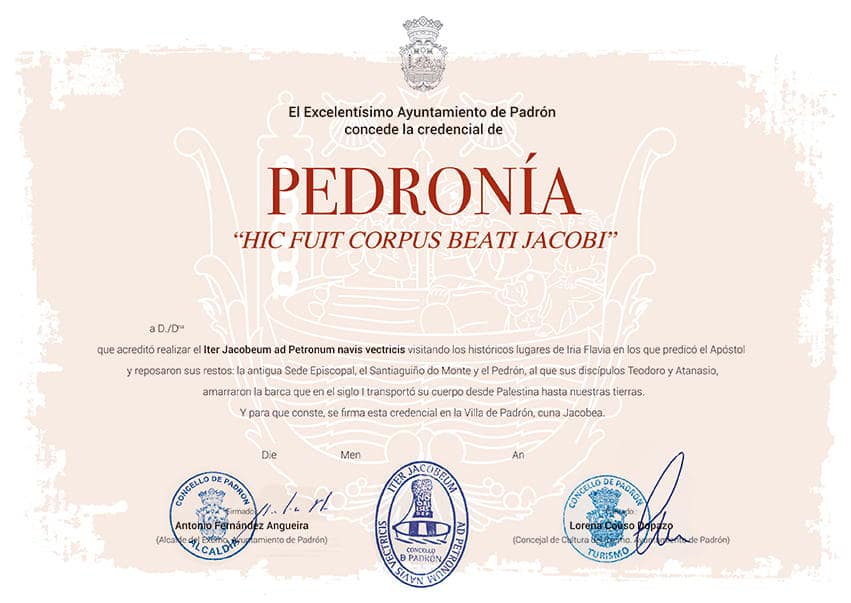The Compostela
The Compostela is the accreditation issued by the Pilgrim’s Office in Santiago on behalf of the Archdiocese of Santiago de Compostela. Pilgrims that have used one of the permitted means of travel, that have completed their Pilgrim Credential correctly, and that have travelled the minimum required distance can request this accreditation.
Compostelas have been issued for pilgrims since the Middle Ages and were an essential part of their pilgrimage as they certified that the person had indeed reached Santiago and had been granted the grace and indulgence associated with the pilgrimage. It was not unusual for pilgrims to walk as penance or even in lieu for someone else. Indeed, many pilgrims would have left their homes with some sort of document (safe conduct) issued by their local parish authorising their pilgrimage. The Compostela would have also served the same function on their return.
Despite having changed over the years, the Compostela continues to be issued in Latin, with your name also in Latin if there is an appropriate translation. See our blog post for the translation of the Compostela to English.
Nowadays, and for most pilgrims, the Compostela continues to make a wonderful memento of their pilgrimage.
Permitted means of travel for the Compostela
You may walk, ride a horse, ride a bike, sail or use a wheelchair. The vast majority of pilgrims walk, followed by riding a bike. Sailing requires some walking as Santiago is not on the coast.
The appearance of electric bikes is an issue that is yet to be addressed as motorised forms of transport are supposedly not compatible with the Compostela.
Distances you must travel
On foot, horse or wheelchair, you must travel the last 100 kilometres (62 miles) to the cathedral. On a bike, the distance is extended to 200 kilometres (124 miles). Sailing requires travelling 100 nautical miles, and then walking the last stage into Santiago.
The Pilgrim Credential
This is a booklet, which will you will use to collect business stamps along the way. As these stamps are dated, they serve as proof for the PIlgrim’s Office that you have actually walked, rode or sailed the Camino. Stamps can be requested at most churches and at almost every business along the Camino (ie. hotels and cafés). You must collect two stamps per day that you travel.
The Pilgrim’s Office will not issue a Compostela to a pilgrim who has not completed correctly his or her Pilgrim Credential.
Other diplomas
Here are some of the better-known certificates that you can request on the Camino de Santiago.
- Distance Certificate
This document is issued in Spanish at the Pilgrim’s Office and certifies the distance you travelled, how you travelled, where you started and when you completed your pilgrimage. Except for who you are and when you completed your pilgrimage, this information is not found in your Compostela. You must present your Pilgrim Credential to request the Distance Certificate.
- Carta Peregrina
This document is issued in Spanish at the former Church of Our Lady the Pilgrim (Santuario de la Virgen Peregrina). The Carta Peregrina certifies that you have reached the halfway point of your Camino, thus, to request it, you must have started near the border with France and present your Pilgrim Credential.
- Fisterrana
This document is issued at the Fisterra Albergue (municipal pilgrim hostel) and certifies that you have reached Fisterra (Finisterre) and the so-called End of the World. You must present your Pilgrim Credential, which you will have used to collect the required stamps between Santiago and Fisterra.
- Muxiana
This document is similar to the Fisterrana, but awarded in Muxía. Muxía is on the coast, north of Finisterre, and tradition believes that this where Our Lady arrived by boat when Saint James was preaching in Galicia. The requirements are the same and you can request it at the tourist office.
- Pedronía
This document is issued in Spanish at the Tourist Office in Padrón on the Camino Portugués. The Pedronía certifies that you have walked to Padrón from Santiago de Compostela or that you have walked 18 kilometres (11 miles) to Padrón, or that you have sailed any distance along the Arousa Estuary to Padrón. You must present the Pedronía Credential to request it.

